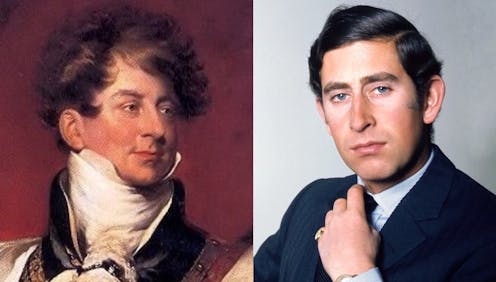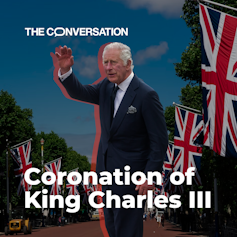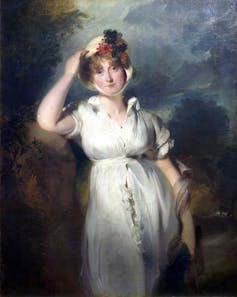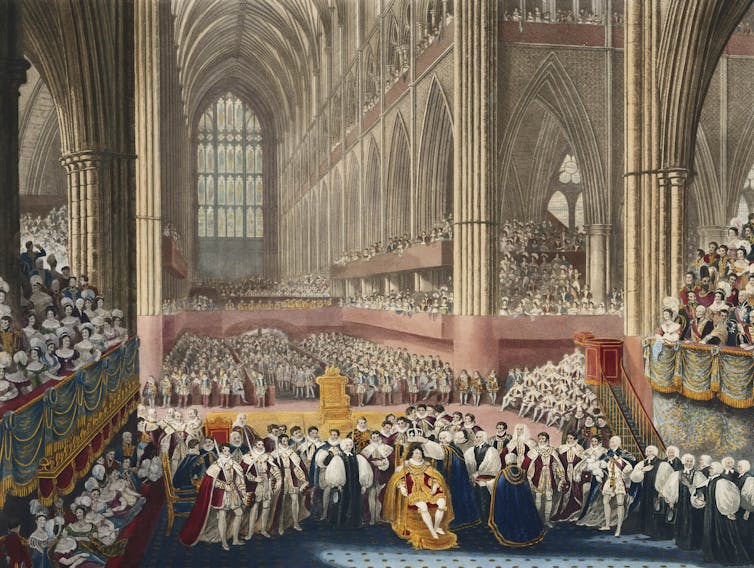
When George III died in 1820, he was the longest-reigning monarch in British history, with 60 years on the throne. Public mourning was adopted across Britain.
In 2022 – just over 200 years later – George III’s great-great-great-great-granddaughter, Elizabeth II, died after 70 years as monarch. Widespread mourning took over the United Kingdom and Commonwealth once more.
In both instances, chapters had resolutely closed in the history of Britain and new eras were busily being ushered in. While the public mourned the passing of an important national figure, attention turned to their successors, George IV and Charles III. How would these kings follow on from their predecessor?
For George IV, six decades had passed since the coronation of his father in 1761. At that time, Britain was a small kingdom with a burgeoning empire in the Americas and the monarchy battled to prove itself an indispensable British institution.

This piece is part of our coverage of King Charles III’s coronation. The first coronation of a British monarch since 1953 comes at a time of reckoning for the monarchy, the royal family and the Commonwealth. For more royal analysis, revisit our coverage of Queen Elizabeth II’s Platinum jubilee, and her death in September 2022.
By his own coronation in 1821, the UK had experienced dramatic social, cultural and economic changes. He was to rule over a nation very different to that of his father.
Similarly, the country Elizabeth II swore to serve at her 1953 coronation was a dramatically different one to that inherited by her son, Charles III. Demographically, politically and religiously, Britain has shifted over the intervening decades, requiring the monarchy to adjust and adapt to accommodate these changes.
The coronations of these kings symbolise more than mere spectacle: they are a declaration of the new monarch’s intent as they transform from heir to sovereign.
For George IV, money was no object in creating the perfect coronation to establish his position as one of the most powerful monarchs in Europe. For Charles III, the coronation is an opportunity to show how the monarchy can maintain the expected tradition and splendour, without seeming to ignore the current economic issues in the UK.
Life in the public eye
Both George IV and Charles III spent decades as heir-in-waiting, their every move scrutinised by the press and the British public.

While he was Prince of Wales, George IV enjoyed numerous affairs which were discussed in the tabloids.
His marriage to his cousin, Caroline Brunswick-Wolfenbüttel, in 1795 was enthusiastically welcomed by the British press and public, eager for a new princess and the promise of future heirs. However, the couple formally separated shortly after the birth of their only child, Princess Charlotte, in 1796.
Similarly, the wedding of Prince Charles to Lady Diana Spencer in 1981 was feted across the United Kingdom and beyond. But when the couple divorced 15 years later, private details of the marriage and of extramarital affairs had been exposed by the global press.
The unhappy marriage of George IV and Princess Caroline was also a topic of avid discussion in the British papers. Immediately following his ascension to the throne in 1820, George IV pursued a legal divorce from Caroline, on the grounds of adultery.
Caroline had left Britain for Europe in 1814. Her alleged affair with her Italian secretary was widely discussed by the British public, but when George IV attempted to use this information to secure a divorce, his hypocrisy was mocked.
Troubled marriages were nothing new for the British monarchy, but the public exposures of the fractures in George IV’s and Charles III’s marriages generated for each king a public image which differed from their predecessor.
Where the marriages of George IV and Charles III publicly broke down, the marriages of their parents had been publicly celebrated as symbols of stability and morality, key elements of the British monarchy in the modern era.
The crowning moment
George IV had no intention of mimicking his father’s image and his coronation showed it. The extravagant event cost 20 times more than George III’s.
A diamond diadem worth £8,216 (equivalent to around £800,000 in 2023) was commissioned for the occasion and the 27-foot long coronation robe was designed to outshine the one worn by the Emperor Napoleon in 1804.

Perhaps the best money spent was on the security: the king’s estranged (and uninvited) wife, Caroline, was turned away at the doors of Westminster Abbey.
The extravagance of George IV’s coronation contrasts with Charles III’s reported desire for a smaller and cheaper coronation. This contrast in approaches to the ceremony reflects the outlook of each king and the contemporary relationship between the monarchy and the British public.
George IV’s coronation was an announcement that the British monarchy would again be a centre of luxury and splendour, unlike the reign of his more sober father. Charles III will, instead, have a less elaborate coronation ceremony than his mother.
This decision is probably in reference to current financial issues in the UK. An elaborate coronation would likely be deemed out of touch and possibly provoke criticisms of the monarchy as an institution.
An over-the-top coronation along the lines of George IV would no longer fit with the public image of the monarchy which has, since Queen Victoria, worked to appeal to the public through association with charitable institutions.
Charles III’s pared back coronation plans point to a sovereign who is keen to show that he and the monarchy can respond and adapt to the contemporary economic and social climate of the UK.
Despite their different approaches, for both George IV and Charles III, the coronation ceremony serves as an opportunity to step out of their predecessor’s shadow and to make a clear statement about their personal intentions for the monarchy.
Natalee Garrett does not work for, consult, own shares in or receive funding from any company or organisation that would benefit from this article, and has disclosed no relevant affiliations beyond their academic appointment.
This article was originally published on The Conversation. Read the original article.







